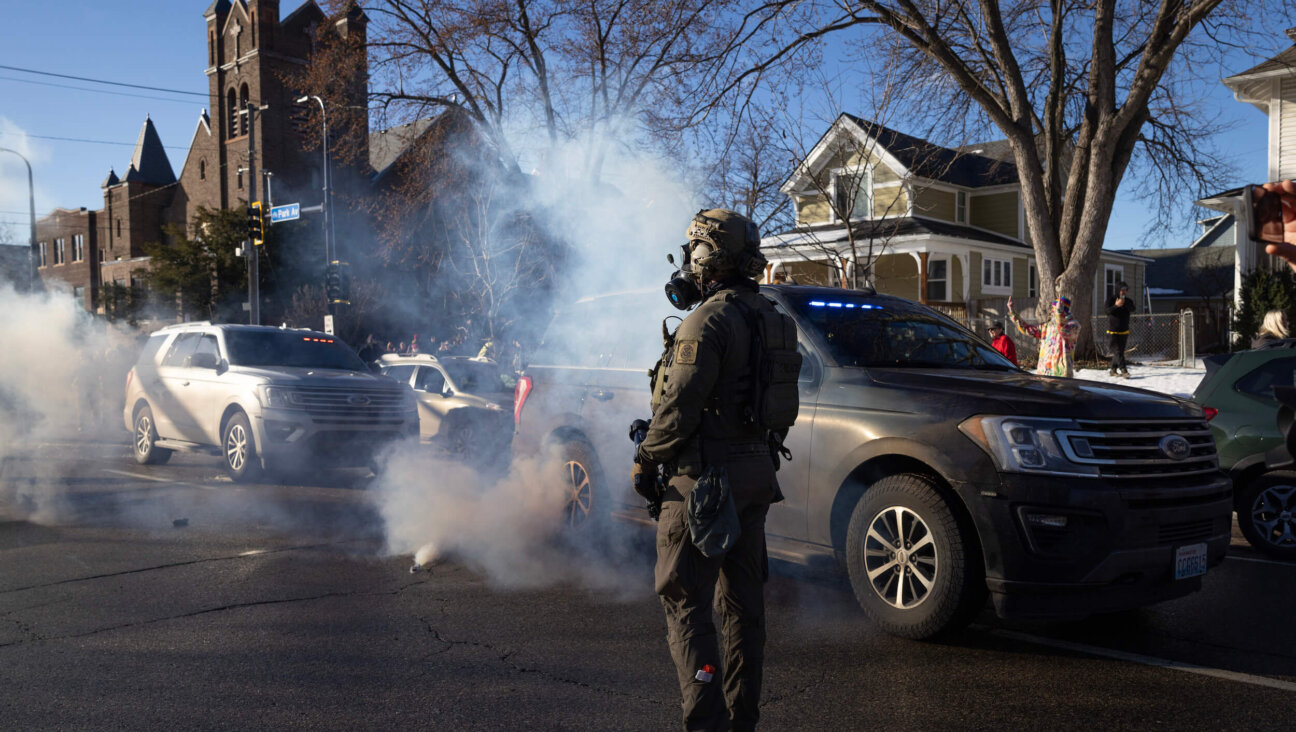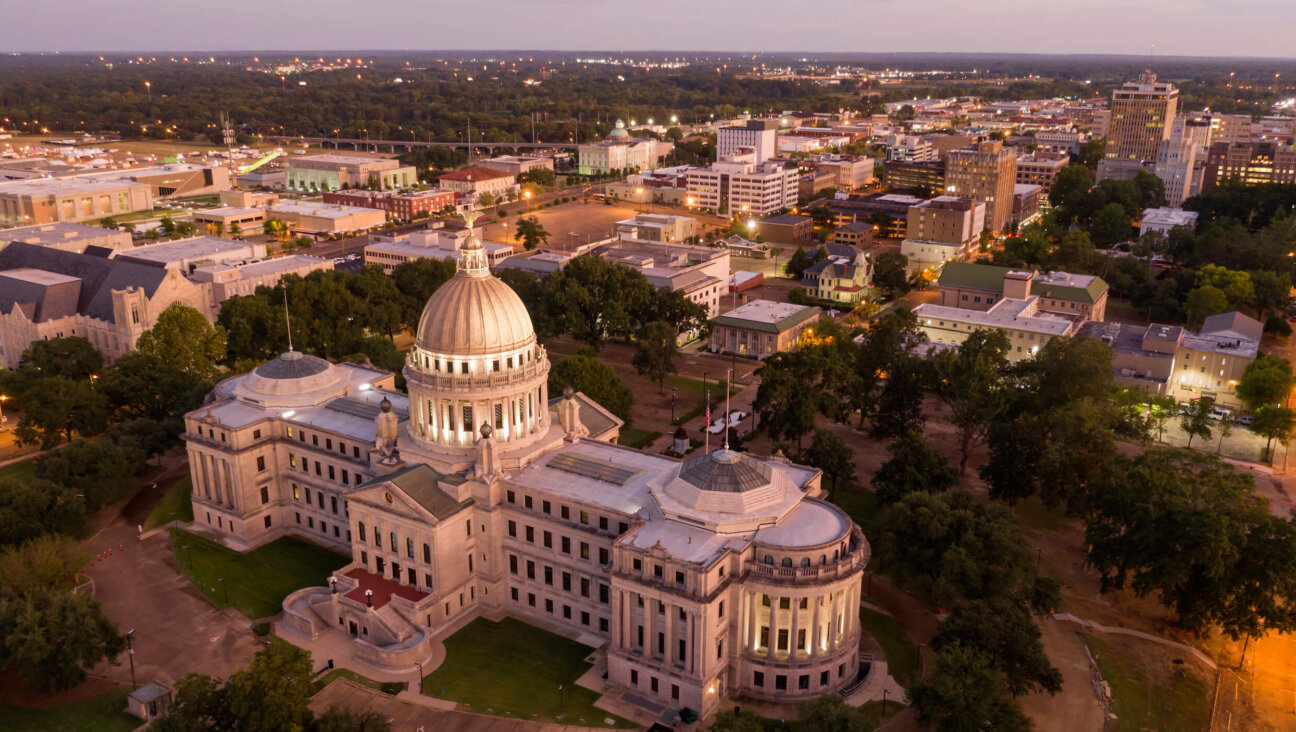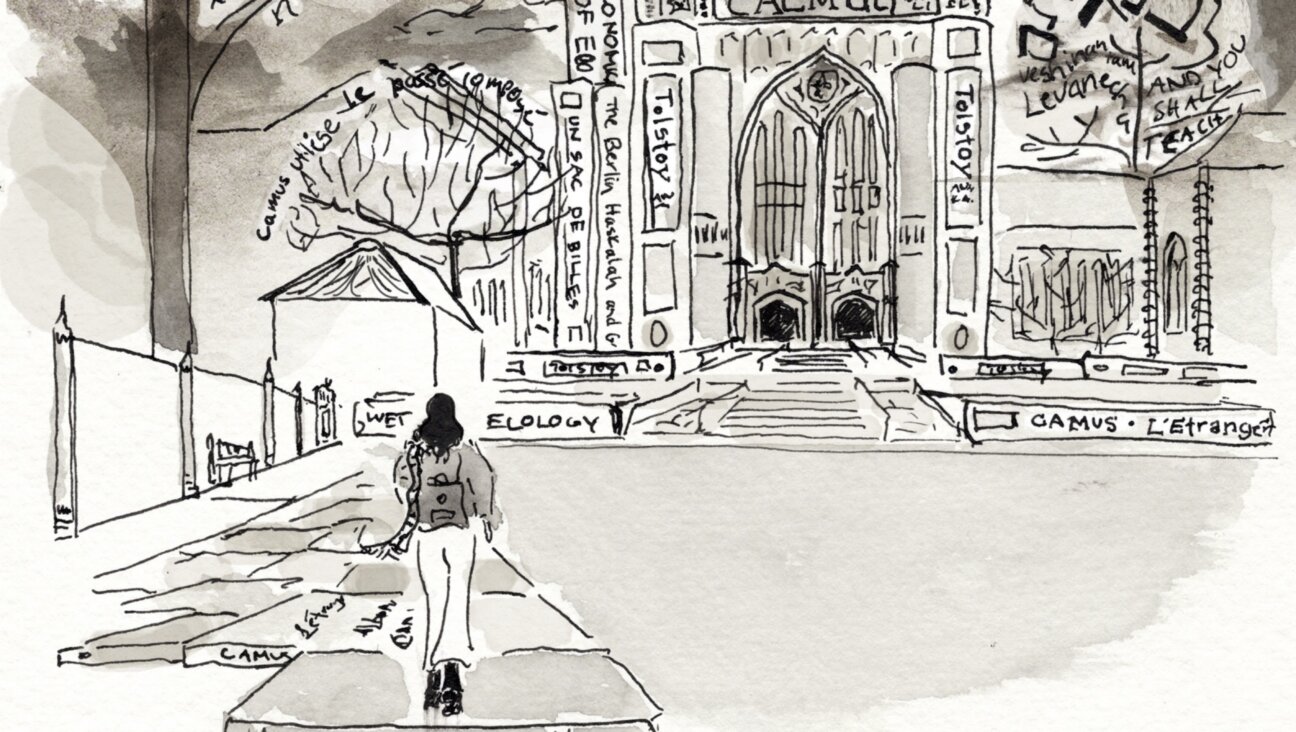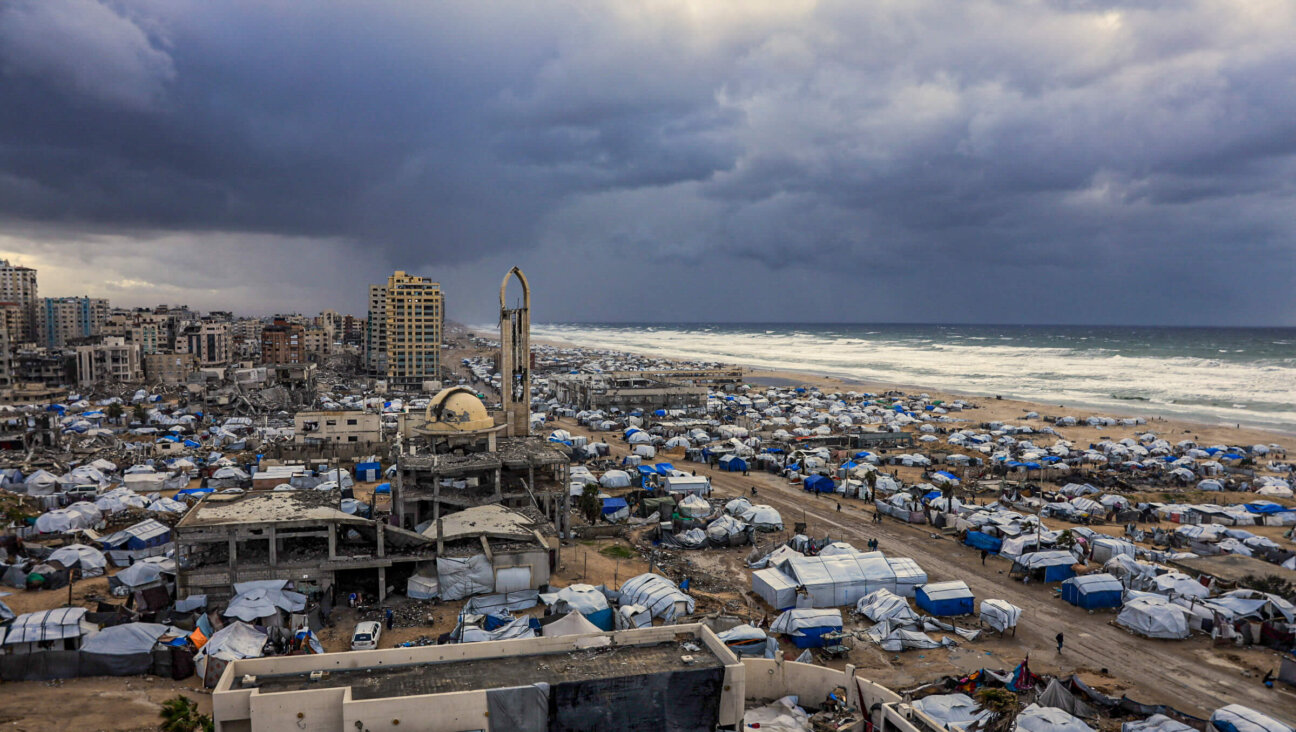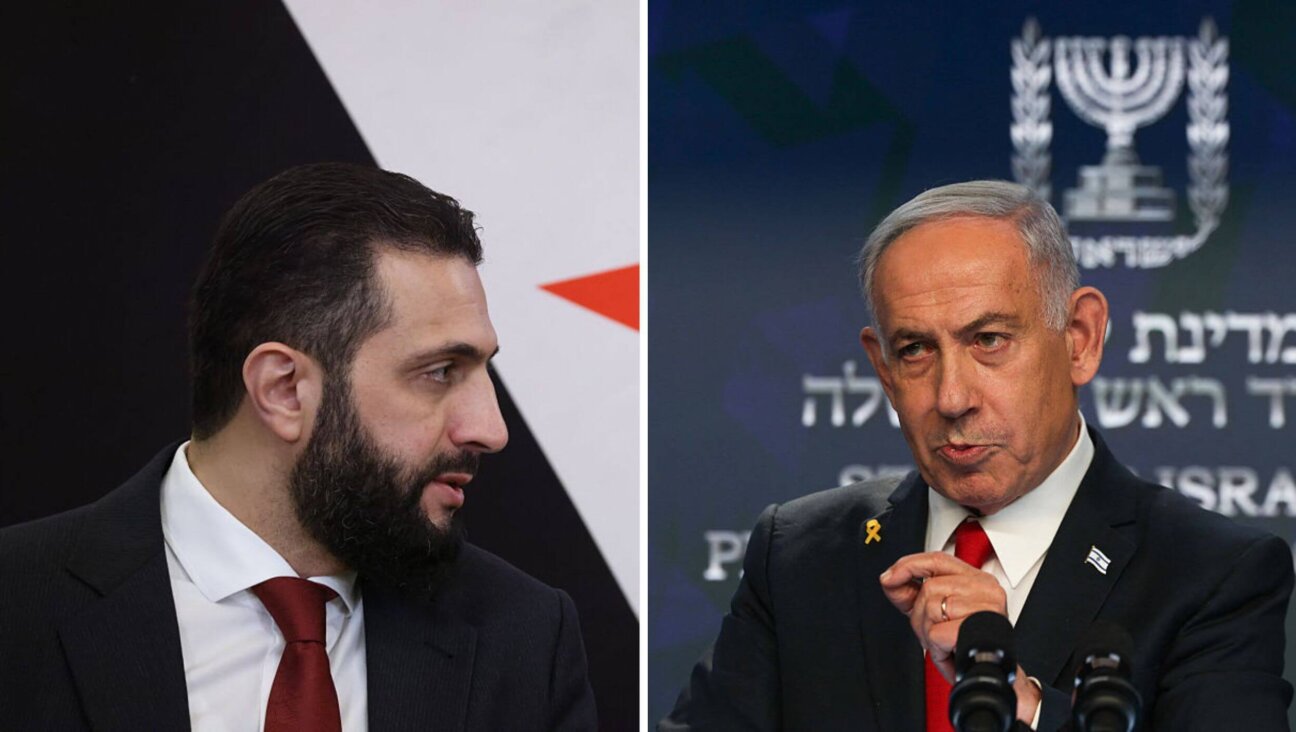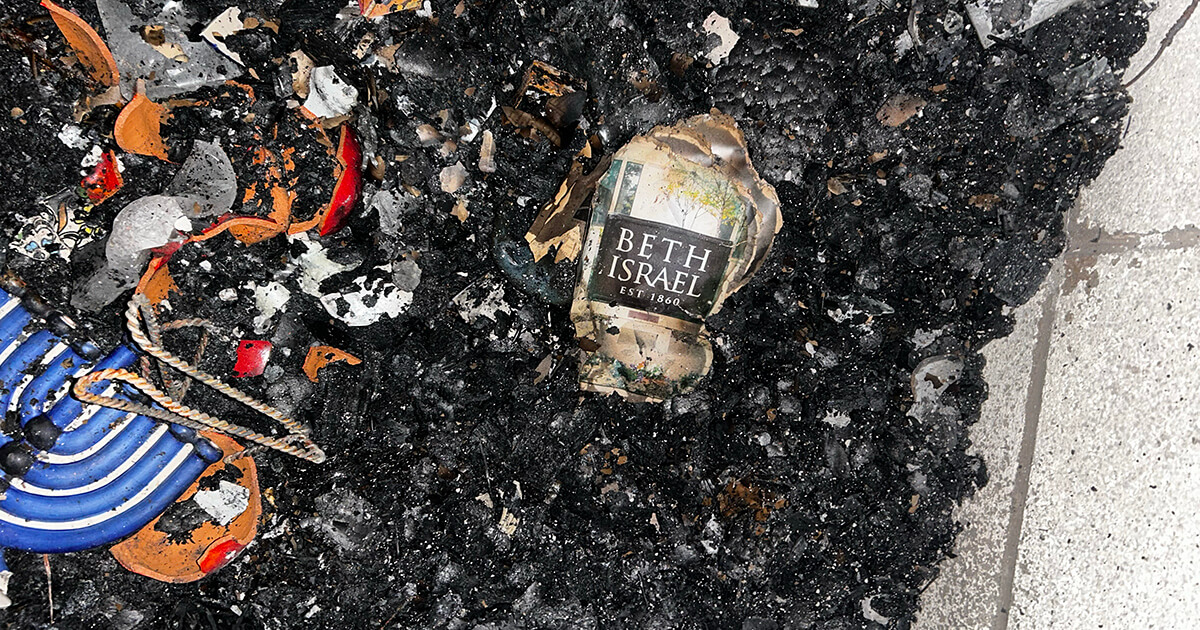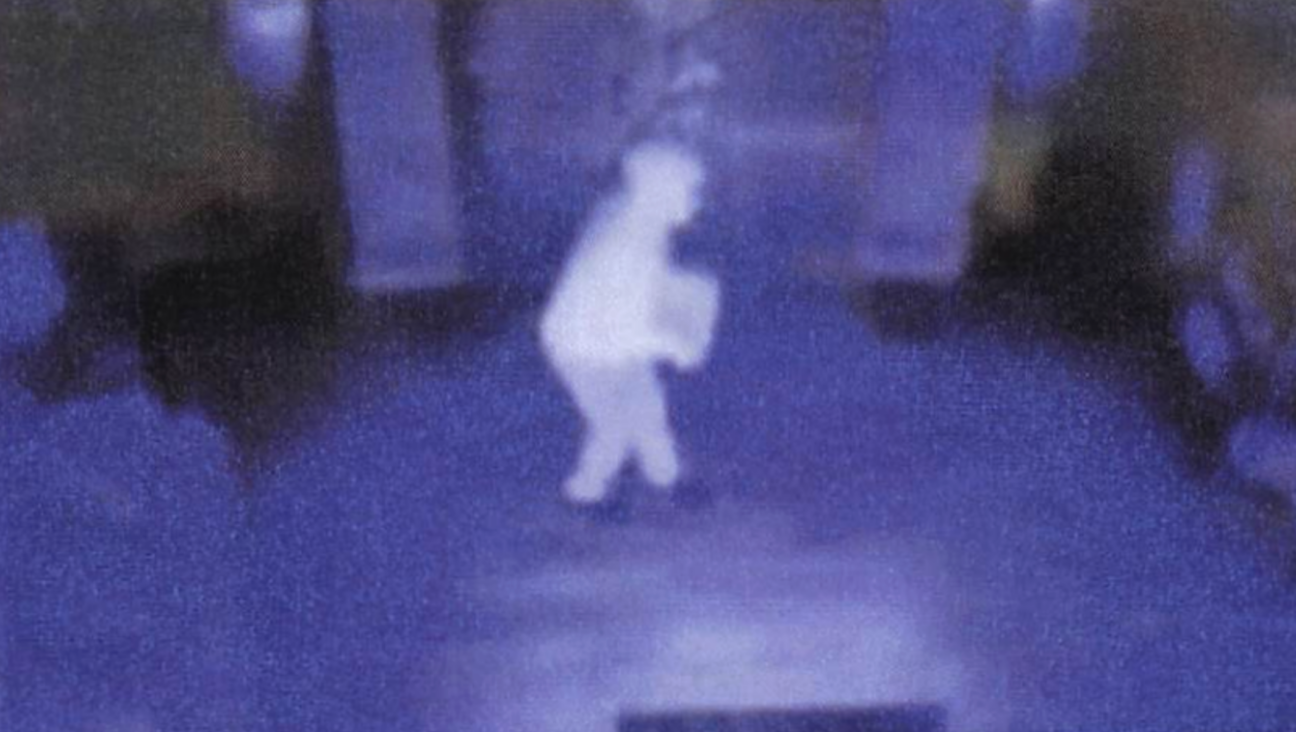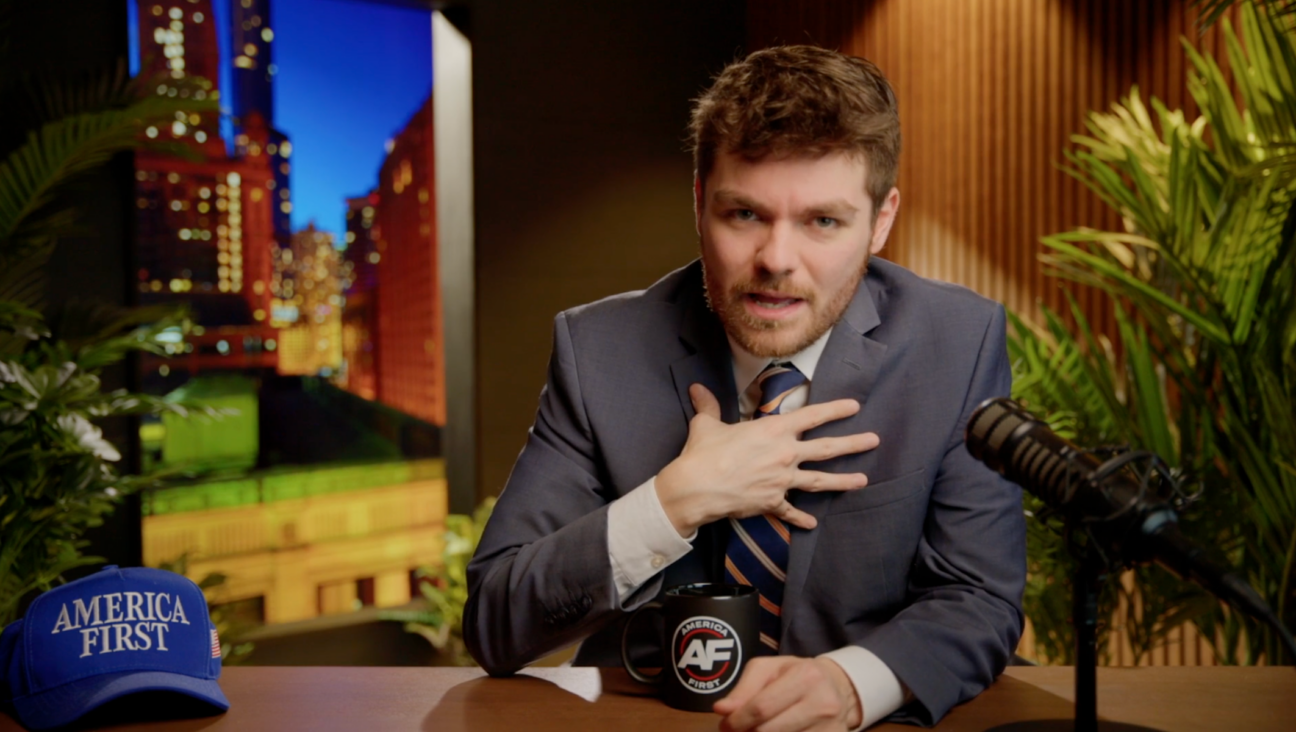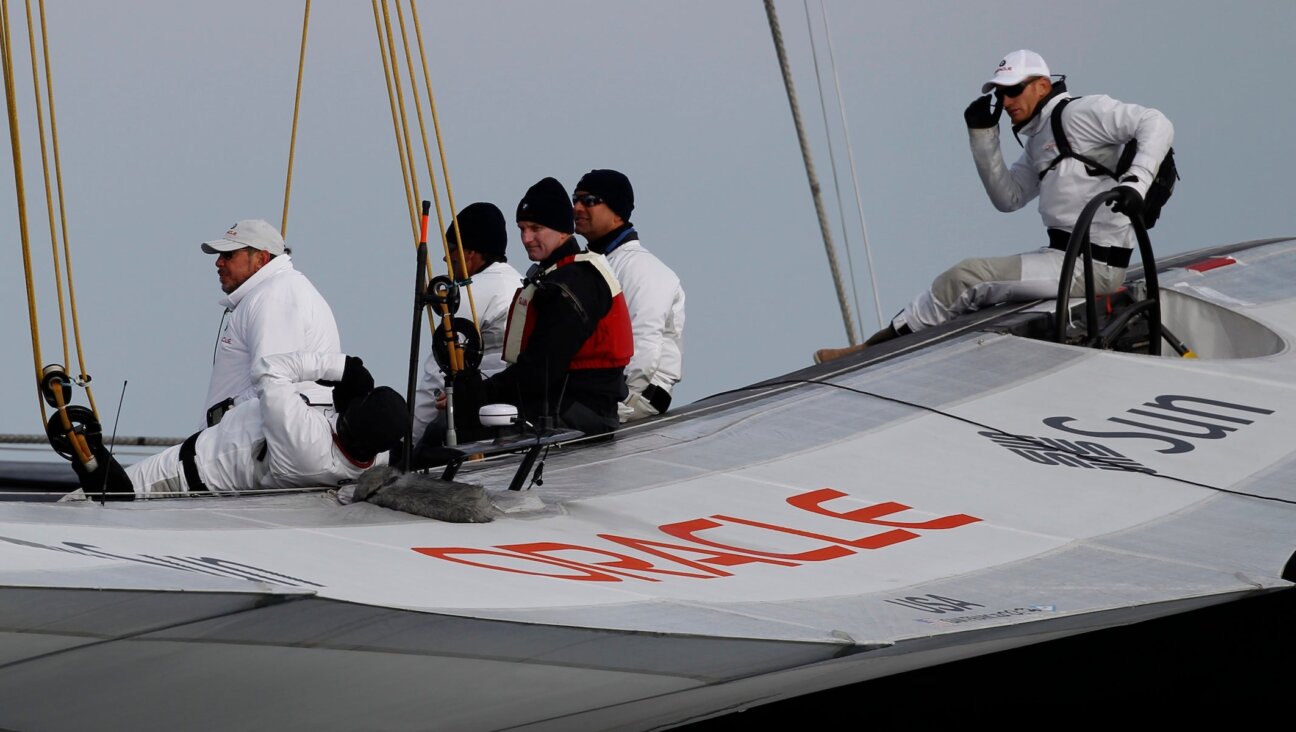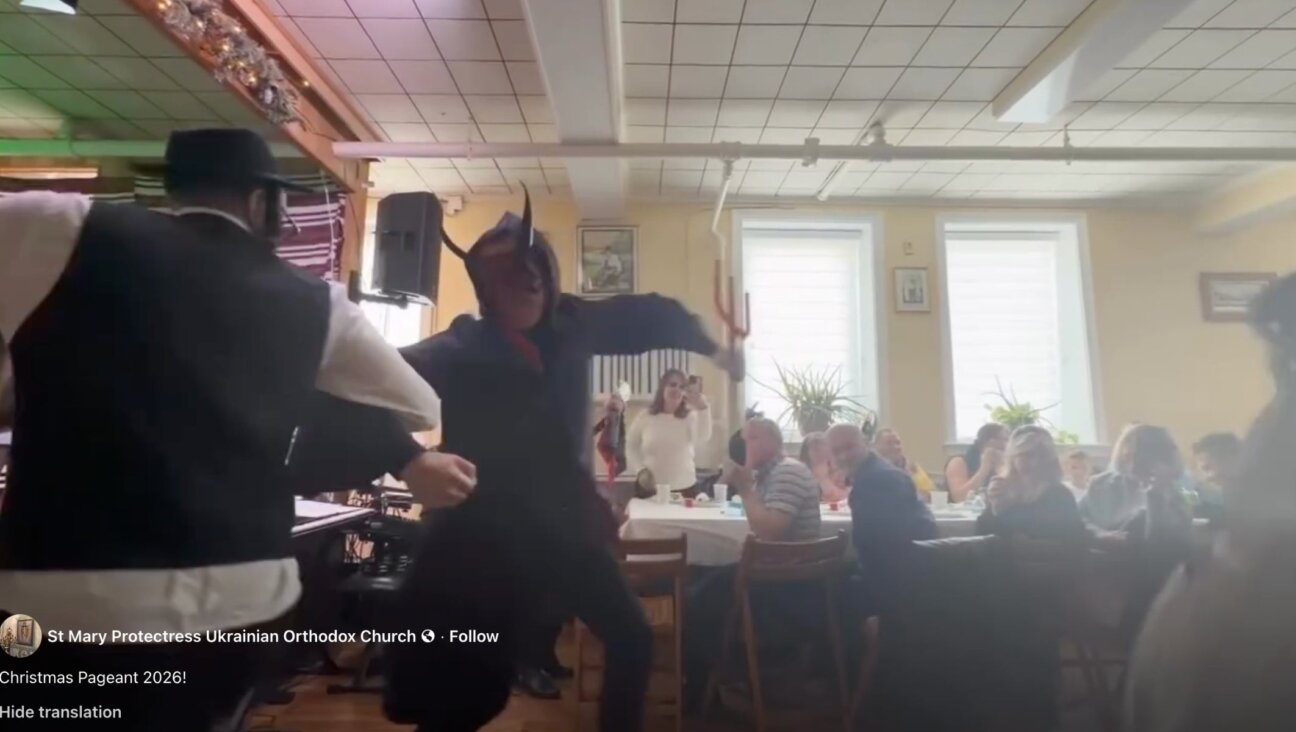Why everyone should go see the Nova Exhibition in Los Angeles
Bearing witness has a different urgency since Oct. 7
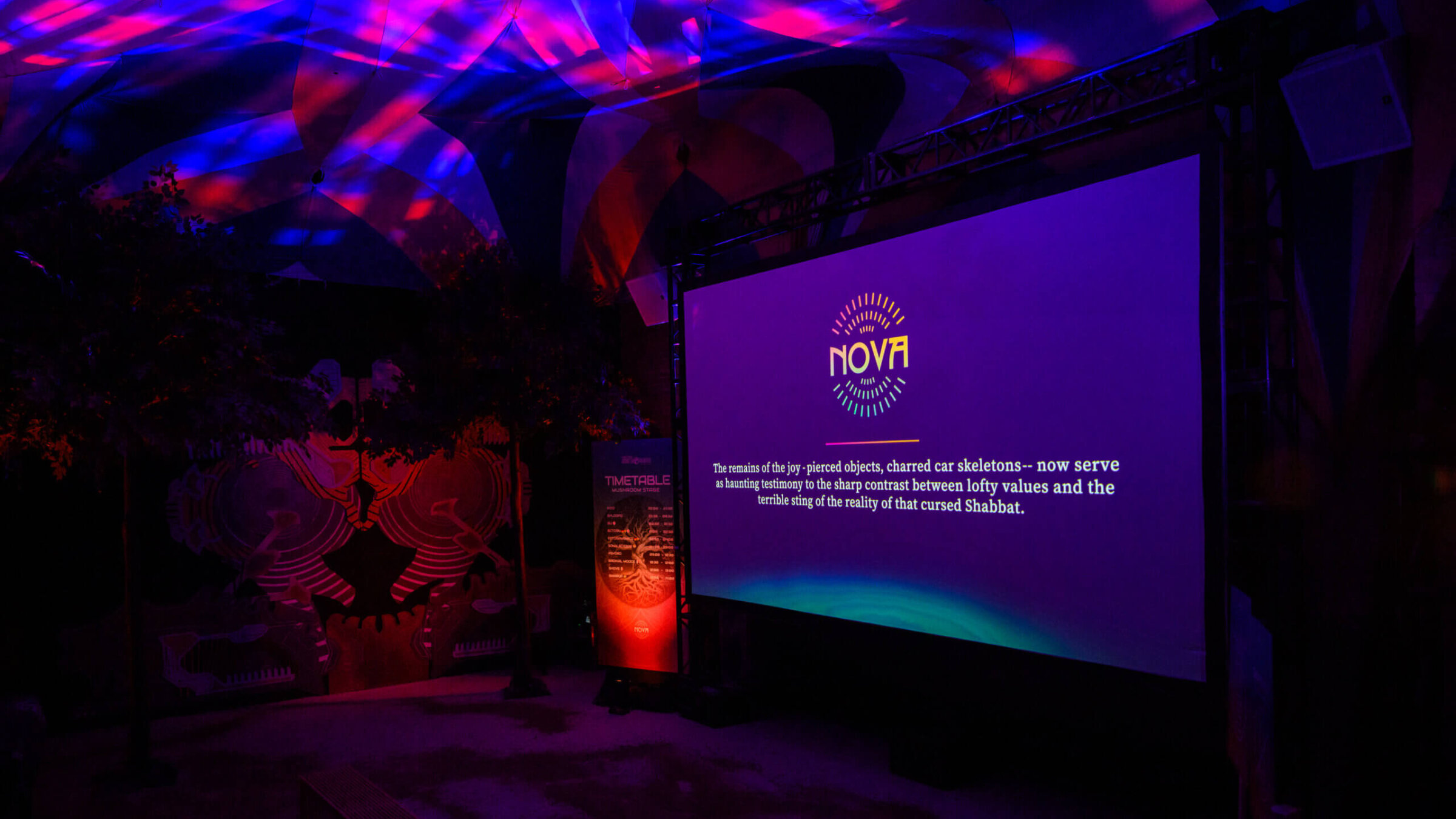
A screen displays info about the Nova festival at The Nova Music Festival Exhibition: October 7th 06:29 AM, The Moment Music Stood Still. Photo by Alexi Rosenfeld/Getty Images for The Nova Music Festival Exhibition
The Nova Exhibition, currently on display in Los Angeles, ends with pictures of the victims displayed on a horseshoe shaped wall over a stack of large notecards. Visitors are urged to write a message on a card and place it in the exhibit.
When I visited on the exhibit’s final days in New York, a quote from a Daniel Silva book about witnessing and remembering pressed on me as the only thing I could possibly write on the card, as I experienced a new sense of urgency about bearing witness and a wider understanding of what that means.
“I was here. I was always here,” Silva’s character says in the 2003 spy novel The Confessor, referring to the old Jewish ghetto in Venice. “And I remember it all.”
I almost did not see the Nova Exhibition, which documents the Hamas killing of 360 people and abduction of 40 at a desert music festival on Oct. 7, during its eight-week run in Lower Manhattan this spring. I’d seen the Israel Defense Forces’ 47-minute film of the invasion, assembled from kibbutz security cameras and the terrorists’ own GoPro’s. I figured this exhibit would be a watered-down version of the carnage. But my 17-year-old daughter wanted to go, so I took her.
Unlike the IDF video, I found an immersive experience that was at turns horrifying, inspiring and, most importantly, communal. The exhibit’s genius is that it simultaneously subjects visitors to the brutality of the attack and envelops them in the stunning beauty of the event itself.
The experience begins with a short video in which the festival’s organizers explain its roots and share their splendid belief in the power of music. The video ends abruptly, as did the festival, with the 6:29 a.m. announcement of the emergency.
Visitors then move into a much larger space, where there were actual camping tents from the festival, still containing personal items. In light that is meant to simulate dawn, multiple video screens blare a cacophony of terrified screams, gunshots and triumphal Hamas yelling.
Moving through the exhibit, the chaos gives way to vignettes of individual stories of survivors and families of victims. The now-familiar video of Noa Argamani — who the IDF rescued from Gaza in June after 246 days of captivity — being taken away screaming on a motorcycle. A mother who lost both of her daughters. A festival-goer recounting how she lay under dead bodies for seven hours awaiting rescue.
There were stories of heroism, too. One man drove through three separate eruptions of Hamas gunfire, getting shot each time. He managed to deliver his friends to safety with IDF troops before dying of his wounds. The exhibit winds past the actual carcasses of festival-goers’ cars burned by the terrorists and bullet-ridden portable toilets before opening up into a re-creation of the dance area, complete with a stage. Ethereal music plays in the background.
Then you arrive at the horseshoe of photos and the large note cards.
Elie Weisel famously said, “For the dead and the living, we must bear witness.” Many Jews think of those words as something of a mantra. And yet many — Jews and non-Jews — have turned away from witnessing the turbulence wrought by the last 10 months.
By the time Wiesel wrote those words in 1978, the Holocaust had ended 33 years before; another 25 would pass before the U.S. Holocaust Memorial Museum, where they are engraved, opened in Washington D.C. This is not the same as bearing witness since Oct. 7, because Oct. 7 is still happening in the tunnels under Gaza, and above ground as well.
Now, bearing witness means getting close to the action and opening our eyes to the very recent experiences of our fellow Jews. It means confronting anti-Israel protests in real time, in person. It means visiting Israel if you can, watching the IDF footage or the Sheryl Sandberg film about Hamas’ sexual violence, Screams Before Silence, and it means, if you’re anywhere near Los Angeles, going to the Nova exhibit, which is scheduled to run through Oct. 8.
You should see it. You should hear it. Critically, you should experience it with other Jews.
What shocks about the Nova Exhibition is the juxtaposition of violence against the backdrop of a festival designed to celebrate life. Sam Harris, the author and podcaster, articulated this with his usual pithiness, while still seething with anger, on the Nov. 7 episode of his show Making Sense.
“They raped, tortured and killed young people at a trance-dance music festival devoted to peace, half of whom were probably on MDMA feeling nothing but love for all humanity when the jihadists arrived,” Harris said, “In terms of a cultural and moral distance, it’s like the f—ing Vikings showed up at Burning Man and butchered everyone in sight.”
That description stayed with me for months. But it didn’t compare with going to the Nova exhibition and feeling — literally, because visitors are encouraged to touch the items on display — what happened there. It is especially powerful to glimpse the horror up close while surrounded by other people doing the same.
On the IDF film, the most heartbreaking moment is watching first responders arrive at Nova and being unable to find anyone to help. My conversational Hebrew is nonexistent, but I didn’t need the subtitles to understand when they asked, over and over: “Is anyone alive?”
That footage takes place around the festival’s beverage tent. At the exhibit, I walked into that actual tent, complete with Coca Cola coolers.
It felt different to see it in person. It felt different to talk to strangers about what we were seeing. After watching a video of the mother who lost not one but two daughters that day, it felt different to hold my own daughter in that space.
Bearing witness is not only about collecting evidence for guilt, or creating a memorial that says “Never Again!” It’s also about sharing space with each other so you can get closer to what happened, and get closer to what’s happening right now.
I placed my card with Daniel Silva’s quote near the stage. A few weeks later, I learned Silva was was coming to my synagogue to discuss his new novel, A Death in Cornwall. I had a look at the author’s Instagram, and was shocked to find a photograph of my handwritten card containing the quote from The Confessor.
It turned out that Silva’s daughter had visited the exhibition on its last day in New York, and sent a picture of the card to her dad. Suddenly, this famous author and I, strangers to each other, were connected by this tragedy, connected because his daughter — and mine — went to bear witness.
